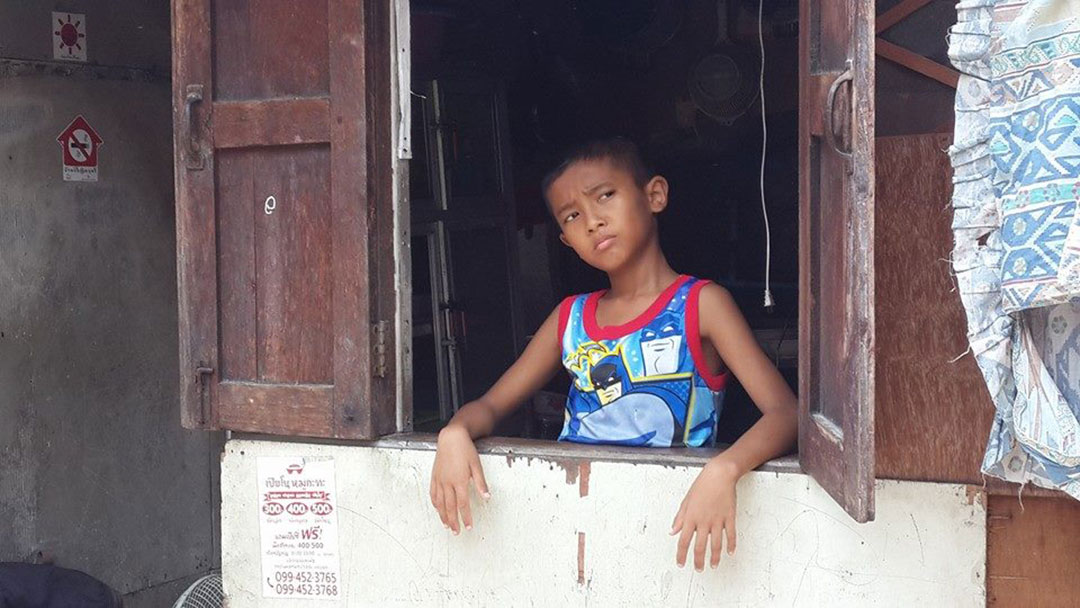The kids shouldn’t come until noon. They know this, their parents know this, the teachers know this. But by 11 a.m., three girls are running laps around the kitchen and common area. Soon two young brothers, both dressed in black t-shirts, enter the building, pausing to wai Geraldine “Gigi” Nemrod, co-founder of the Khlong Toey Music Program (KTMP).
“How can I tell them no? Every moment they’re here is another moment they’re not on the streets,” says Nemrod, a French national and former research scientist.
For almost five years, she and a team of local musicians have offered free-of-charge music classes every Thursday and Saturday – even the odd day in between – to children who live in the Khlong Toey slum communities, the notoriously marginalised shantytowns in the shadows of the city’s shiniest skyscrapers and even closer to the country’s Stock Exchange.
Among the estimated 5,000 slum communities in Bangkok – a nebulous figure that swells as rural workers, preconditioned to living paycheck to paycheck, migrate to the city between harvests in search of work – none are bigger, and perhaps bleaker, than Khlong Toey.
In this district cradled by Bangkok’s busiest port and fresh market, more than 100,000 people – roughly 1 out of every 100 Bangkok residents – live within the heaving confines of one square mile. The residents have become de facto squatters, refusing to budge from state-owned land. (Paradoxically, they also supply the cheap labour the Port Authority requires to run a smooth ship, so it’s something of a quid pro quo relationship.) They have used scavenged wood and corrugated metal to construct homes on top of homes, narrowly separated from other homes.
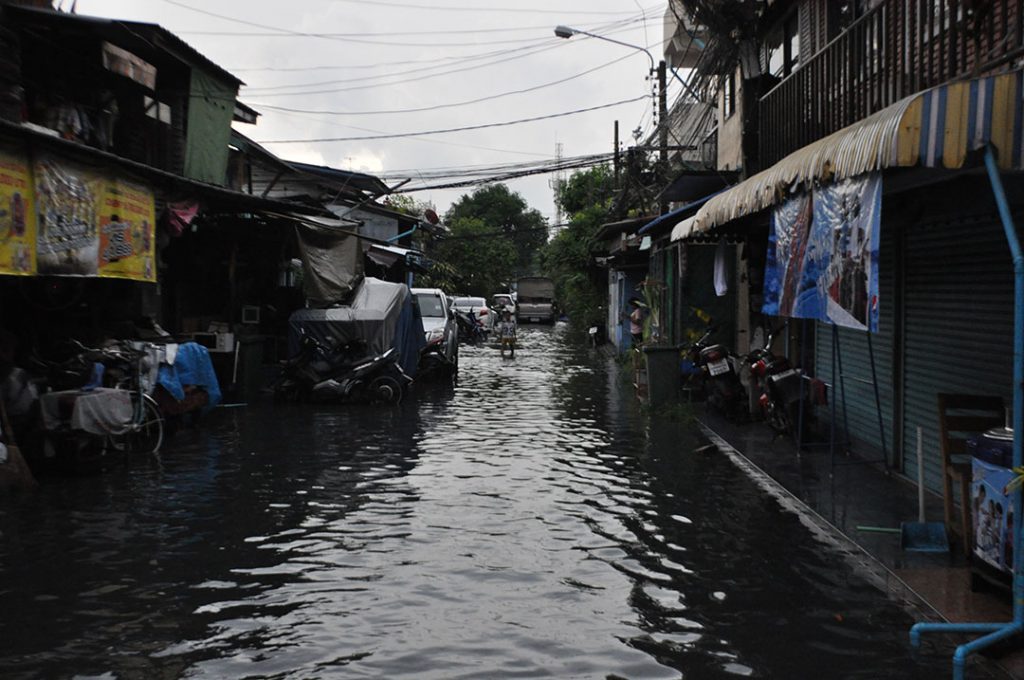
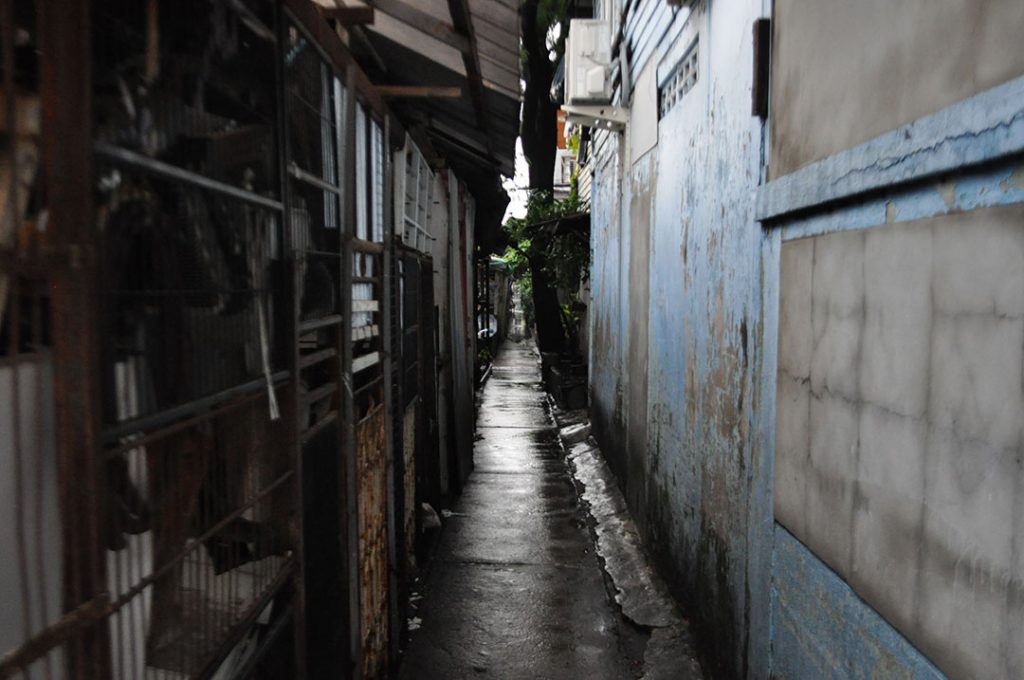
But when KTMP’s doors are open, every kid in Khlong Toey, even those in their early twenties, can find sanctuary among the five floors filled with guitars, basses, drum kits, violins, ukuleles, keyboards, and recording equipment – soon, even a dance studio.
On special occasions, the troupe has performed at venues that include the Mandarin Oriental and the French Embassy. They’ve recorded tracks and put them up for sale on Bandcamp. And since KTMP became part of the Playing for Change Foundation, they’ve enjoyed the kind of cross-cultural interactions that would have otherwise been a pipe dream.
For some of these children, music has become a source of healing and social growth.
One boy was born inside the women’s prison where his mother was incarcerated, transferred to a family member’s home in Khlong Toey, and grew up never knowing his father.
“He was angry all the time,” recalls Nemrod. “Who wouldn’t be, with circumstances like that? He would lose it at the smallest things and start fighting with other kids.”
But he discovered a salve for his emotional outbursts: singing. “When you watch him on stage, he gets so into his songs everyone stops and notices. And he’s much calmer now.”
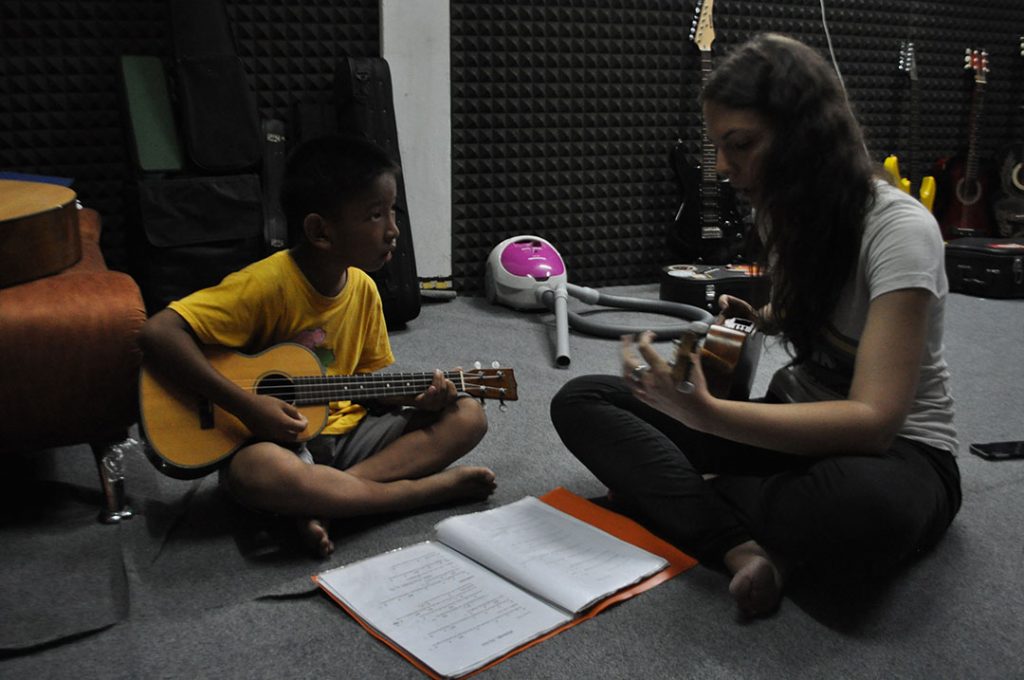

Even some of the teachers say they have found salvation through music. “I had a lot of problems with my family when I was young,” says Piyawat “Aum” Supamit, a professional musician originally from the southern town of Chumphon, who has taught at KTMP since its foundation. “One day, my brother introduced me to the guitar, and I found out pretty quickly that playing it made me feel good. It made me feel like I could deal with anything. I figured there had to be a lot of kids out there who were like me (lost, desperate, with no one to talk to). I got involved with this project because I wanted to share music with them, too.”
These children are potential success stories, the ones who have so far eluded the traps that poverty places before the underprivileged. And in Thailand, where the fifty wealthiest people are worth a combined 123.5 billion US dollars but the residents of Khlong Toey earn half the average national household income of about 3,000 US dollars a year, that’s not such an easy thing to do. Clear one trap (prostitution, domestic violence) and another emerges (the brain-burning mix of caffeine and methamphetamine known as ya ba, or crazy medicine).
Almost thirty years ago, the LA Times ran an article on the Khlong Toey slums. At the time, the community had about 60,000 residents (most migrant workers from the rural Northeast were undocumented then, and oftentimes now, so official numbers tend to fluctuate). Ten years later, the New York Times ran a similar story. The only differences were the community had ballooned to 100,000 and the edge formed by its vices had softened a little.

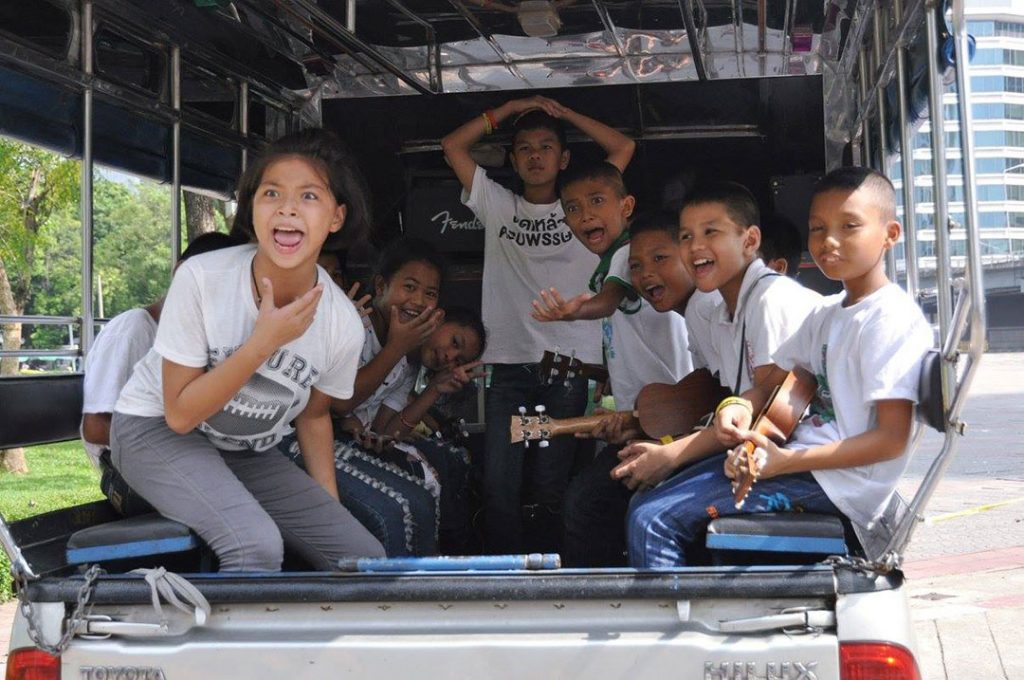
That this Khlong Toey community is self-contained, a city separated from the city by train tracks and waterways, helps explain why it remains on the periphery of public consciousness. In his memoir Bangkok Days, author Lawrence Osborne writes, “For months I had been only dimly aware of this sprawling zone, noting its presence in passing when I skimmed through crime stories in the Bangkok Post. There was nothing in it to see, no restaurants to slum in, no bars, no oddities to linger over…It had been there for decades, neglected and feared.”
The fear, and some of the desolation, has begun to fade, however. Credit this turnaround to the work of long-standing institutions such as Cooking with Poo, a highly successful cooking class, taught by Khlong Toey local Saiyuud “Poo” Diwong, within the same avenue of rotting old row houses as KTMP; the Duang Prateep Foundation, which serves over 20 causes, ranging from education to art projects to rehab programs; and the Mercy Centre, the hallmark of Father Joe Maier, an American priest who has lived among this community for 45 years.
The work of such non-profits has given the youth opportunities to become aware of their own intrinsic potential – and the potential for life beyond the slum. At KTMP, those opportunities run the gamut from learning in small groups to playing a range of professional-quality instruments (all are donations, many from prominent Thai bands) to finding out that life is more than a few years of school followed by manual labour to simply having some freedom.
“I don’t have this much space [to play] at home,” says Bank, a 12-year-old boy who professes to wanting to become, in his words, “a police officer who also plays music.”
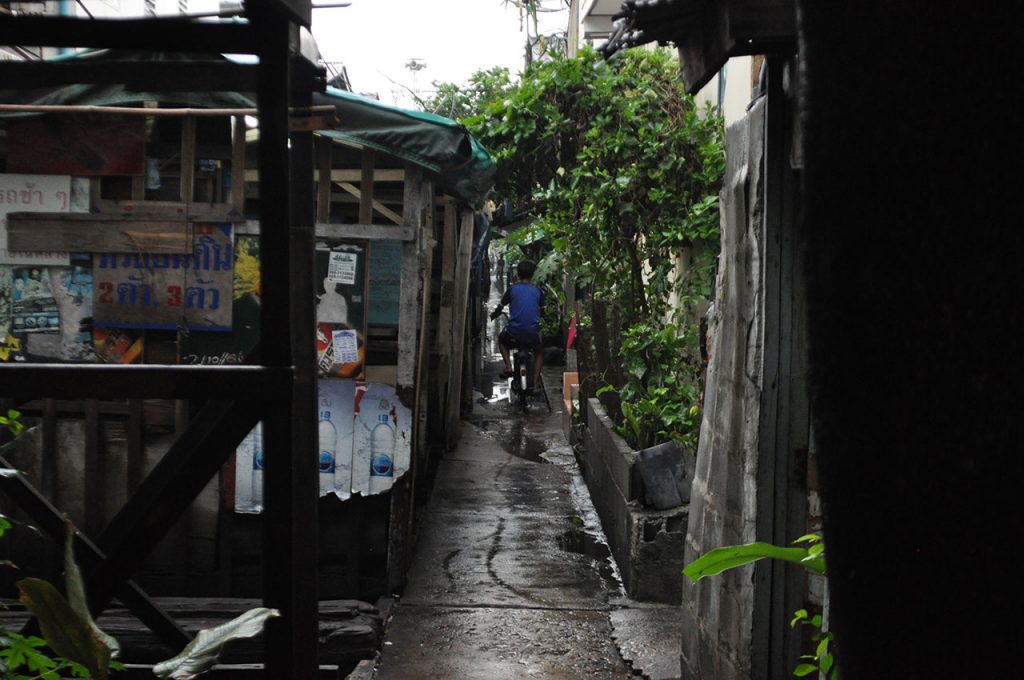
“A lot of these kids aren’t even aware that they can go to university,” says Nemrod. “We’re trying to help them find scholarships for that, and more importantly give them confidence in themselves. We want them to learn how to dream and be creative and never give up.”
For proof that every person in Khlong Toey has potential, Nemrod points to 20-year-old Pond, one of the regulars. Six years ago, Pond woke up blind, an insidious result of rapid macular degeneration. Despite his malady, Pond remains remarkably upbeat, she says, choosing to find the good in life rather than succumb to its hostility. In fact, she notes, “He didn’t start learning how to play the ukulele until after he went blind.”

